Two F-35 jets have successfully landed on-board HMS Queen Elizabeth for the first time.
This milestone lays the foundations for the next 50 years of fixed wing aviation in support of the UK’s Carrier Strike Capability.
Royal Navy Commander, Nathan Gray, 41, made history by being the first to land on, carefully manoeuvring his stealth jet onto the thermal coated deck.
He was followed by Squadron Leader Andy Edgell, RAF, both of whom are test pilots, operating with the Integrated Test Force (ITF) based at Naval Air Station Patuxent River, Maryland.
Shortly afterwards, once a deck inspection has been conducted and the all-clear given, Cdr Gray became the first pilot to take off using the ship’s ski-ramp.
The reason that the aircraft are American isn’t some scandalous outrage or sign of something terrible, it’s simply that most of the F-35Bs in Joint Operational Test team are American. Just watch how some papers report this, though.
After speaking to one of the pilots in the test programme, we understand that the UK only has three (BK1, 2 & 4) test jets that are “orange wired” to take data for post-flight analysis, the rest being operational aircraft. It is understood that the two ‘orange wired’ F-35 test aircraft, belonging to the Integrated Test Force will now conduct 500 take offs and landings during their 11-week period at sea.
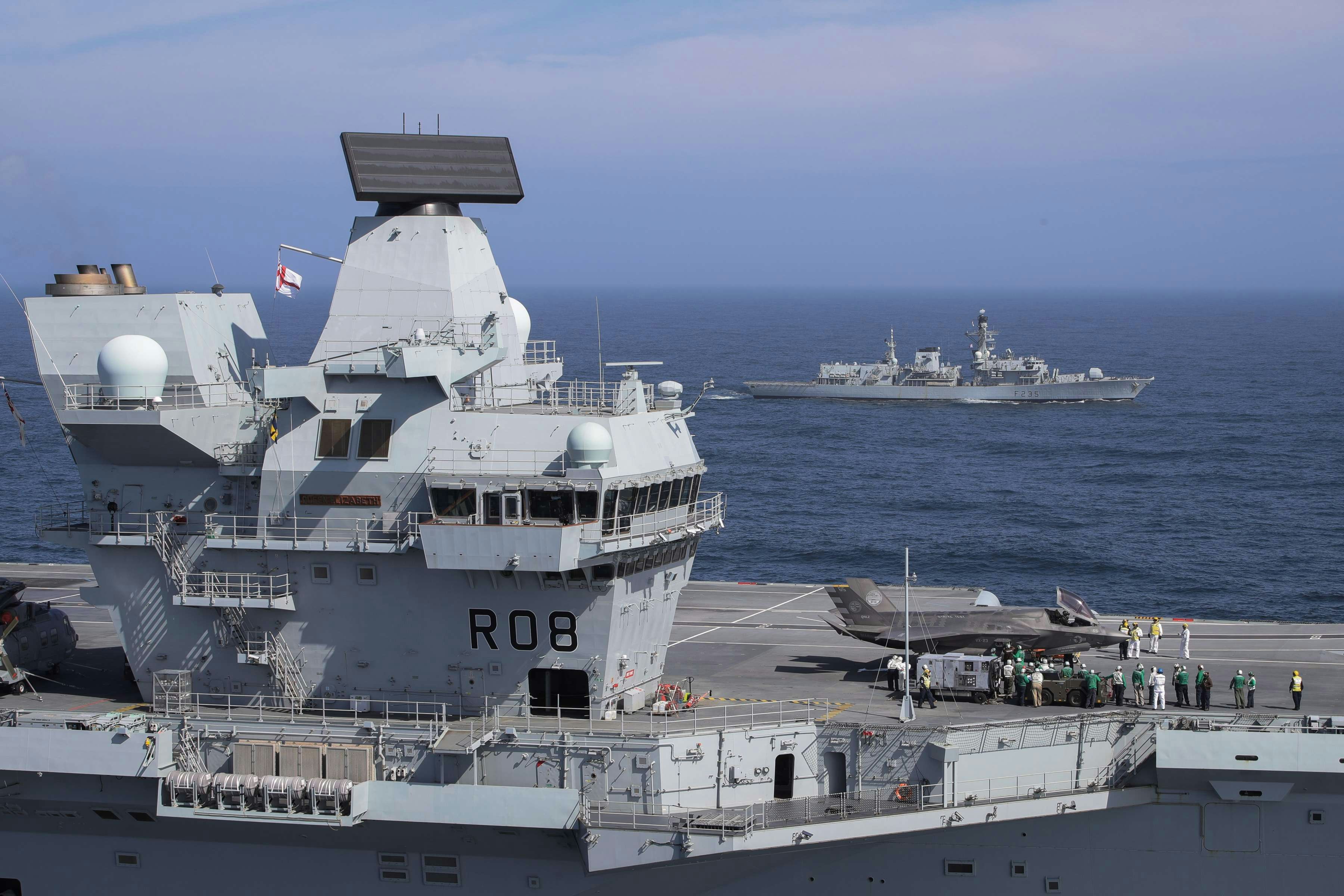
We were told last by one of the UK pilots currently flying the jet that the reason for this is that the JOT team dictate the availability of test jets out of a pool. Our contact said:
“It would be nothing more than symbolic to make UK jets available for the trials and that comes at a significant effort since all of them are based at Edwards AFB in California, not on the East Coast where the ship trial is due to take place. Therefore, the most obvious and cheaper choice is to use the F-35B test jets based at Pax River, which are US ones. British test pilots like Andy Edgell, Nath Gray, will obviously fly them but there’ll be US pilots too because that’s how Joint Test works.”
The ship will go on to continue her programme off the US east coast. The flight trials are expected to take around 11 weeks, during which time the ship is also expected to call into New York.


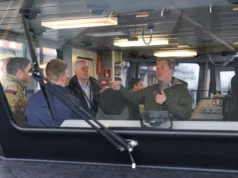

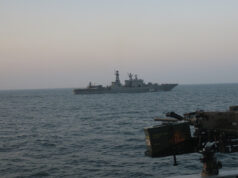
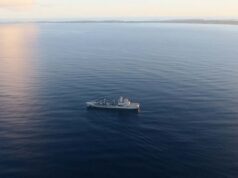
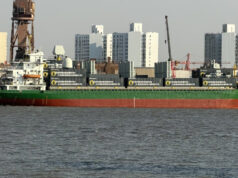
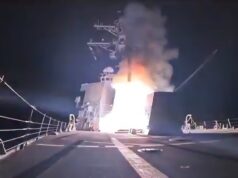
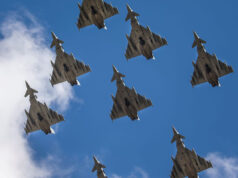

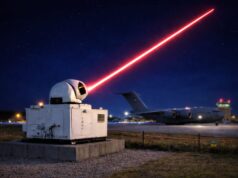
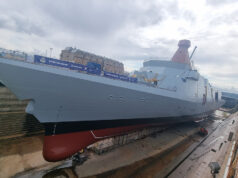

Pride this morning watching this by I guess everyone here.
Spite and scorn by the usual 2 individuals.
God bless the RN and the RAF.
It’s been a long time coming but what a sight. Onwards and upwards.
Terrific video!
Amazing scenes! Looking forward to the next few years as it all comes together.
As the shore based ski jump is not as steep as the one on QNLZ, the first take-off also marked the steepest ski jump take-off by an F35b.
I assume that being the very first takeoff test that was the most lightly loaded of all the configurations that they’ll be doing, no simulated weapons load and only enough fuel to get back to the carrier plus generous safety reserves, but I must say that it looked totally effortless. I wonder what wind conditions were like.
It’ll be very interesting to see how things progress as they start upping the takeoff weight. I’m also really looking forward to seeing some rolling landings and what sort of take-home weights those will be able to support.
So good to see this critical phase of the testing get underway. This is the point where the RN really begins to understand and validate the operating parameters and capabilities they will have to work with in future operations. I doubt we’ll ever get to know the real limits that that they end up mapping out but it’s critical that they are collecting and collating this info in real life using the exact carrier configuration now as opposed to estimating it from computer simulations.
This is going to be a very valuable and productive 11 weeks and, even if we never hear about it, fingers crossed for some upside surprises in the data collected.
Bit of a schoolboy question but why wasn’t the shore based ski jump an exact copy of the one on QE?
I had no idea it was any different either.
Thinking about it it makes sense to get the ski jump software roughly right on the shore based ramp then tune it in the sea trials where you will have to factor in wind and deck movement. No point in perfect software for a perfect ( and more expensive) fixed land based ramp.
In a similar vane was it the case that the Ramp on HMS Ark Royal (as built) was a different angle of slope than both Invincible and Illustrious ?
An interesting point which some on here might be able to answer, with a full load including the gun pod, is there a risk due to the steepness that the gun pod would be dangerously close to the ramp at take off?
I noted that some of comments posted on this thread suggest a difference between the QE’s ramp and the one used for testing.
Thank you in advance!
I’m pretty sure there will have been very careful calculations on that. There is likely to be a clearance envelope around the actual surface of the fuselage and wings, a sort of invisible outer skin, that has been calculated by looking at how every square centimetre of the aircraft’s surface will pivot (move) relative to the closest part of the surface of the ramp at any given time. That modelling will also have factored in compression of the nose gear suspension under maximum load so that, as long as all extremities of any weapons loaded are all contained within that invisible skin, adequate clearance will always be maintained between the ordnance and the surface of the ramp. I would guess that one of things they are measuring very carefully in these tests is the compression of the nose gear suspension during all these takeoffs and correlating that with the computer models. There shouldn’t have been any major unknowns in the computer modelling and even the nose gear compression will have been at least partially validated physically already by static test rigs and land ramp testing rather than relying on the properties of the compression components so big variances between the QEC ramp computer models and reality are, I would think, unlikely.
TL;DR – I suspect they’ve checked it all on computers and it will be fine.
The onshore ramp is an exact copy what you on about!! Or am I wrong?
Being an aircraft maintenance engineer; I was more impressed by it’s steering limits! Lol!
I read your comment before watching the video. I was also impressed. Do you know if there is power to the wheels? It turned so sharply I can’t see rear thrust only doing that. Another question, doesn’t the raised lift fan cover act as a big airbrake?
Well i’m not military so just my opinion. I don’t think there is any power to the wheels;engine thrust should do it. The raised lift fan door will definately act as an air brake and from what i’ve read, the old design had doors which opened sideways which had minimal drag but this caused fan air instability so they had to modify the door so it directed dynamic air into the fan. I would have thought this would cause a large performace penalty.
Yes I wish my car could do that
Could the approach distance not be increased from the ski jump to allow for less vertical thrust from the lift fan? Or is the case as the load out/weight increases the distance does to allow more forward thrust on take off without needing an increase from the lift fan?
Also does this leave the rear of the deck free for SVRL to increase sortie rate? Or would the deck be kept totally free in case of issues/aborted landings? Genuinely curious!
I wondered that too. Also note that it’s not just the lift fan.
Try to pause and un-pause that video so that you’re pretty much single-stepping through the frames between about 1:47 and 1:49 and you can see that the rear nozzle for the main engine is also directed quite dramatically downwards. With 0 degrees being pointing straight out of the back as for a regular F-35A to give maximum forward acceleration and 90 degrees being pointing straight down at the ground as for a vertical landing I’d say the main nozzle is at almost 90 degrees when its nose wheel just gets to the ramp. I don’t know how quickly that nozzle can move but if it’s at that level of deflection at the start of the ski-jump then I would imagine it must start deflecting a reasonable way back into the horizontal run up. If the run up were longer there would be more time while the nozzle was horizontal hence giving a lot more forward velocity to the aircraft.
Like you, I’m just curious. I’m not idiotic enough to believe for one microsecond that we’ve come up with some clever idea and that all the experts and designers haven’t calculated this all out in exquisite detail years ago. It probably is the fact that this is a very light first load so they didn’t need the full run up to get the airspeed over the wings to lift a heavier load and if it’s not that then as you say, maybe something in how they need to manage deck space to maintain sortie rates, ensure contingencies for emergencies etc.
Fair play to the BBC for once. Nice video.
https://www.bbc.co.uk/news/av/uk-45687169/hms-queen-elizabeth-fighter-jets-take-off-and-land-for-first-time
I assume this is just a tiny part of the footage that the documentary crew will have been capturing for the last few months and will eventually make its way into at least a 1 hour documentary if not a multi-parter like last time to cover this next stage of QEC’s development. Maybe they’ll call a stop and start putting the documentary together for broadcast once she gets back to the U.K. after this round of testing. I do hope so.
Disappointed at the lack of coverage in the quality press who seem incapable of reporting good news!
Indeed. At least the BBC did do a segment on last night’s TV news about it and did concentrate on the positive news about our F-35B flights without feeling the need to rope in the US F-35 crash in SC.
Some background on the media coverage.
https://thinpinstripedline.blogspot.com/2018/09/how-not-to-do-defence-media-f35-trials.html
(Chris H) Good to see the USMC lads and lasses (in green) from VX-23 working on their aircraft mucking in with the UK lads and lasses. the teamwork from Petuxent has transferred well.
‘Word is’ they have been itching to get on QE themselves …
And two type 23 Frigates are now under threat as very quietly the budget for Trident has gone up yet again from last years £43b plus £10b in treasury reserves to this years £50.9b plus £10b treasury reserve – if no new monies are made availble it is clear (with a £20b shortfall) that the second carriers is under threat or at best reduced availability as if we lose two more escorts we will not be able to field more than one carrier at any given time.
Those that may recall the operational requirements for the QE carriers was that they would be available 9months per year with both operational together for 6 months per year, it is clear as Trident eats into MOD budgets this is not going to happen
beautiful
Chris, going forward the more I think about it the more likely it is that the USMC will become as permant a fixture on the Queen Elizabeth as the RAF. It just makes sense, even if we deploy 2 squadrons there will still be bags of room for the USMC to deploy as well. it makes sense for us as we can ensure that we are continually keeping the skills needed to manage a busy deck and full hanger, without the expense of fully deploying all our F35 squadrons. For the US its just an all over win in that they can have a deployed squadron of 5th gen aircraft in a place in the world without having to deploy a carrier or assault ship. The US has a need to focus it carriers in the Pacific without letting go of the Middle East, eastern med and western Indian Ocean, I suspect this is where the UK carriers will be spending most of their operational time (barring flag showing into the Pacific or a need to chill out in the north occasionally), having the USMC on them will keep the US skin in the game to the level they need in the region.
She really is going to be a paradigm shaping ship, RN and RAF Shared asset, multinational shared asset, it’s a new way of doing maritime air power.
A nice little video clip which I found better than the one above
https://twitter.com/RoyalNavy/status/1045931179478851586
I very much think that when the F-35b takes off with the large Fan- lift cover open, the cover will act as an air-brake to slow a plane down. Because the drag from the open cover makes the plane not aerodynamic. This drag must counterbalance the upward lift from the fan. A plane’s wings give it lift. I wander if the fan can be disengage which will result in the turbine spinning faster, providing more rear thrust?